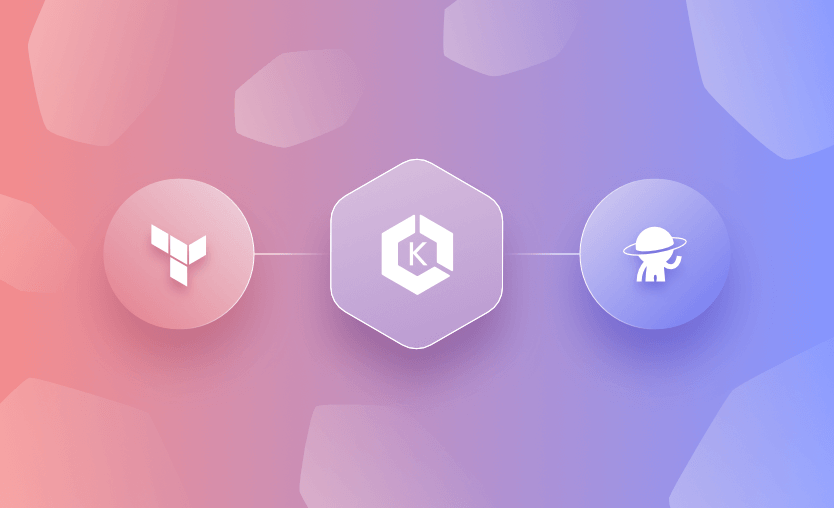Note (October 2025): Screenshots and labels may differ slightly from today’s UI. For the most current steps, see the Kubernetes docs in Spacelift.
By now, you have probably heard about the Kubernetes integration in Spacelift. It is generally available and fully documented.
Spacelift, like many of our customers, utilizes Kubernetes in a variety of ways. Before the integration, we operated managed public worker pools and private worker pools, testing and hosting the Spacelift platform.
Now that the Kubernetes integration is generally available, we thought it would be good to provide a simple way for you to provision a Kubernetes cluster on AWS utilizing Terraform with Spacelift. If you are using Kubernetes worker pools note that we now use an operator based approach.
This blog will guide you through the process of deploying a Terraform based deployment of an EKS cluster with Spacelift. Below is an example of the cloned Terraform repository.
Repository Creation
Start by cloning the repository found on GitHub and commit to your respective VCS provider. We made a few changes, but that was only to help with the naming and possible confusion in our dev environment. Otherwise, utilizing the repository as-is will work.
Create EKS Cluster Stack
In Spacelift, click Create a stack to create a Stack.
Integrate VCS
- Select the repository you created in the initial step, as seen in the picture.
Configure Backend
For this example, I will keep the default selections.
Set Workflow tool to Kubernetes and choose the kubectl version. Optionally set Kubernetes namespace or leave it blank to work across namespaces.
Define Behavior
If you need to modify the configuration, select the arrow next to Show Advanced Options. You can find out more about these options by reading the documentation.
Name Stack
Name the stack and provide any labels or descriptions.
Configure Integrations
To provision the EKS cluster, this Stack requires integration with AWS.
Navigate to the Settings, Integrations page and select the dropdown arrow to access the following selection screen:
The following links will help you set up the necessary integration with your Cloud Provider of choice.
To simplify things, I decided to utilize an AWS role that already exists with the necessary permissions to provide the essential resources associated with this Terraform example.
Trigger a Run
To Trigger a Run, select Trigger on the right side of the Stacks view.
Trigger Run Status
Planning
After you manually trigger the Run in the Stack view, Spacelift will deploy a runner image, initialize the Cloud Provider, and run a Terraform Plan based upon the contents of the Terraform code.
After a successful planning phase, you can check the log to see the planned changes.
To confirm the Triggered run, click the CONFIRM button at the top of the screen.
Finished Deployment
The following screen highlights the Finished Run and output from a successful deployment to your Kubernetes cluster.
Outputs
To review the outputs associated with this EKS cluster deployment, navigate to the outputs page. You can find all pertinent information about this cluster.
You have completed the deployment of an EKS cluster via Terraform with Spacelift!
Accomplish the Mission
Get started on your journey by signing up for a Free Trial and taking it for a spin around the world! Sign-up is as easy as authenticating with the provider of your choice.
Terraform Management Made Easy
Spacelift effectively manages Terraform state, more complex workflows, supports policy as code, programmatic configuration, context sharing, drift detection, resource visualization and includes many more features.
